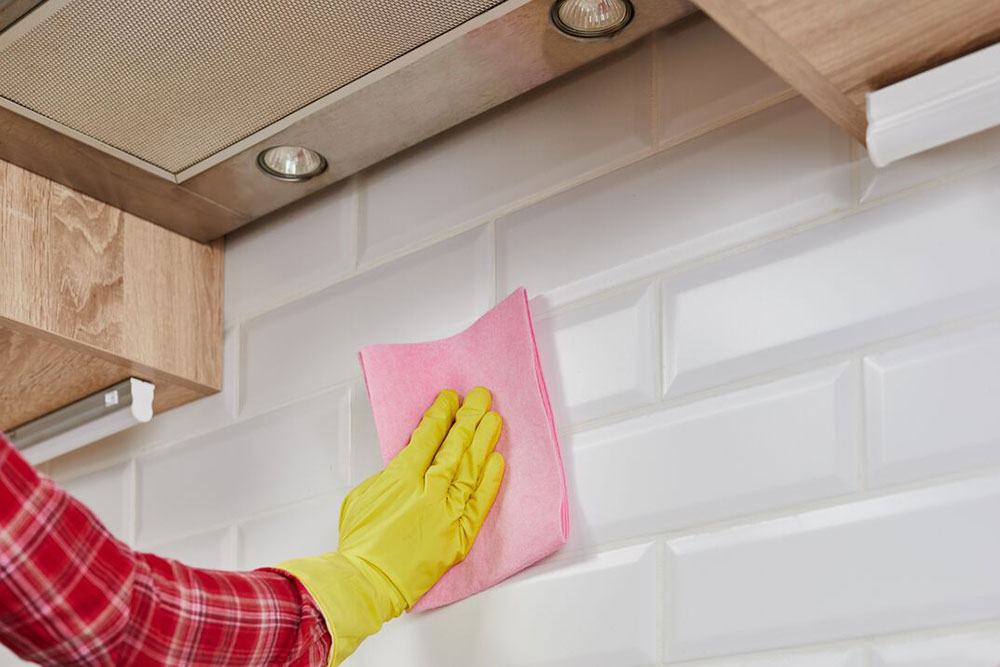Advertisement
Travertine remains a popular design material for both experts and do-it-yourselfers. The backsplash is the last thing to be picked and installed. And it is at this point that individuals feel compelled to make a “unique” and “original” choice. A stone backsplash is one of the great options.
If the color of the travertine in your living room isn’t exactly to your liking, you may modify it with ease. Travertine’s porous surface takes stains and colors quite effectively.
Whitewashing is a simple (and quick) way to neutralize some of the orangey tones found in travertine. The whitewashing travertine tile backsplash is a time-consuming procedure.
If you don’t like the color of the travertine tile in your house and want to learn how to whitewash it, this guide is for you.
Keep reading this article to learn how to whitewash travertine tile backsplash and much more.
What is Travertine?
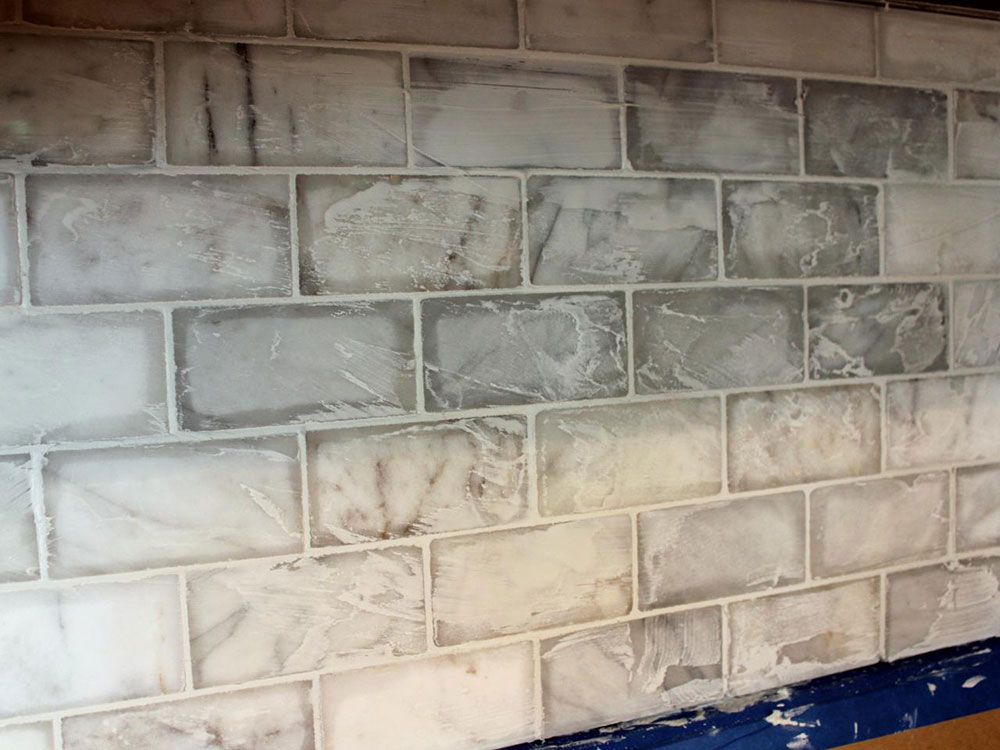
When learning how to whitewash travertine tile backsplash, we should start with some basic info like: what exactly is travertine and what are its main traits as a material?
Travertine is a sedimentary terrestrial natural stone created by the precipitation of carbonate minerals from solutions in-ground and surface fluids, as well as geothermally heated hot springs. Tufa is a similar (but softer and more porous) deposit generated by ambient-temperature water.
Travertine can tolerate heavy traffic areas while retaining its rustic charm—all while requiring little care. Travertine can be mended with ease and tile by tile if it is fractured or damaged. For its good traits, it is used for a stone backsplash.
Travertine tiles may be utilized for both travertine stone backsplash and flooring applications. It is available in four finishes:
- tumbled,
- polished,
- honed,
- and brushed.
Travertine stone tile can fade over time, especially if placed in a high-traffic location. If this occurs, you have the option of painting or whitewashing your travertine tiles. This is a very good option to have in mind for stone tile backsplash maintenance.
Is it possible to bleach travertine stone tile? Of course! You’ll clean the stone tile as directed here, skip the primer, and then make your watered-down paint mixture for whitewashing.
What is Limewash?
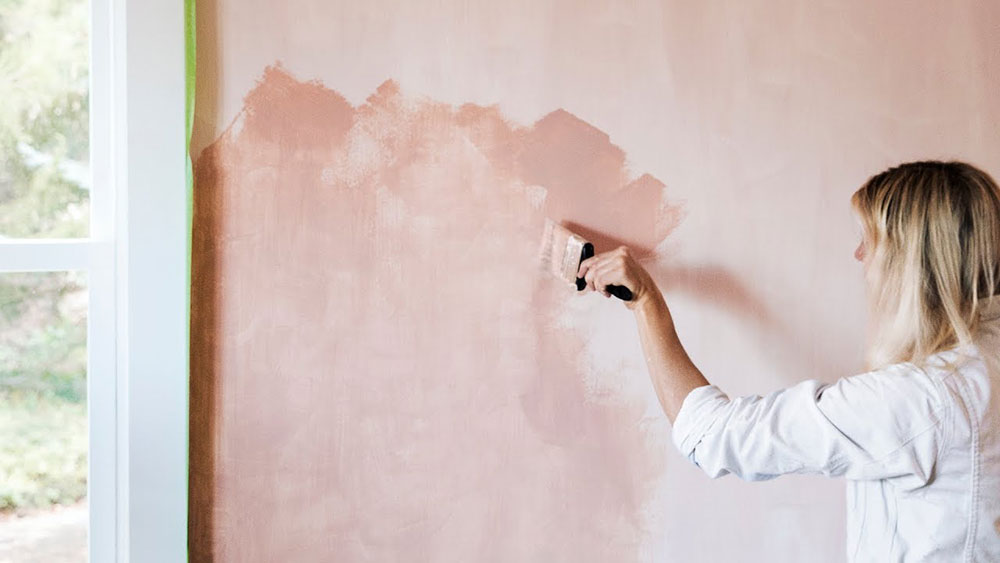
Limewash is formed by combining crushed limestone with water to make a paint-like material. Limewash stone tile floors, on the other hand, have a matte feel, as opposed to painting (similar to the texture of chalk paint).
Limewash is an antique painting technique that dates back to Roman times. It ages nicely. The limewash absorbs into porous surfaces, giving them a natural, earthy look.
Limewash produces uneven, matte surfaces with a sandy appearance similar to suede. It gives flat walls depth and brightness.
Because limewash is porous and breathable, it calcifies to the tile for optimal durability and will patina with time, lasting decades without the need to repaint or maintain the surface. Because of the paint’s high pH, it is mold-resistant and has high UV and fade resistance, allowing the color to retain its depth and quality over time.
Is Limewash Environmentally Friendly?

Traditional limewash is prepared from natural lime and natural colors and is free of the solvents that have propelled paints to the top of the list of home environmental dangers. Mineral additives are used in certain modern cultivars that have extra binding agents to keep the benefits for ecology features maintained.
Because lime has a high pH when dissolved in water, germs cannot thrive, giving it a hypoallergenic property. Proponents also claim that limewash has a chemical composition that eliminates smells (as well as toxic CO2), thereby enhancing indoor air quality.
Is Limewash Cheaper Than Paint?
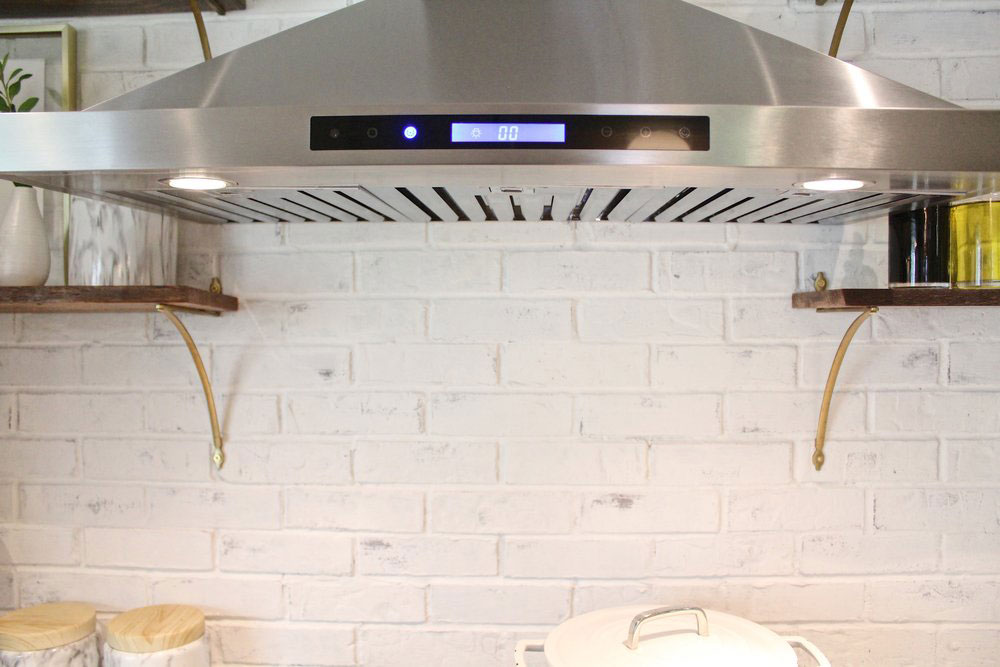
Limewash is a lot less expensive than paint. You may make limewash by purchasing hydrated lime and mixing it with water. A 50-dollar bag of lime is enough to cover an average-sized home. Water is also free.
How to Whitewash Your Travertine Backsplash
Clean the Area
Use a gentle cleanser to clean the travertine tile. A strong clean should be avoided since it will most likely leave a residue. To clean the project area, the best option is to use a light detergent and warm water. Clean with a sponge. On your travertine tile, avoid using harsh brushes.
To bleach travertine tile, use a 1:1 mixture of white paint and water and apply it to each tile. To get an equal coat, move gently across the squares. When remixing, keep the same ratio in mind to ensure that the whitewash is uniformly spread.
You might also choose to whitewash your travertine tile. Whitewashing is a simple technique. All you have to do is mix white paint in the proper proportion with water. Paint your travertine tile with the mixture. The correct paint-to-water ratio is 1:1.
Remove Grout
To clean travertine grout lines, make a gritty paste with equal parts baking soda and water. This may be brushed onto the grout with a little brush, allowing you to clean the gaps between the tiles without hurting their edges and damaging the substance.
Mix the Limewash
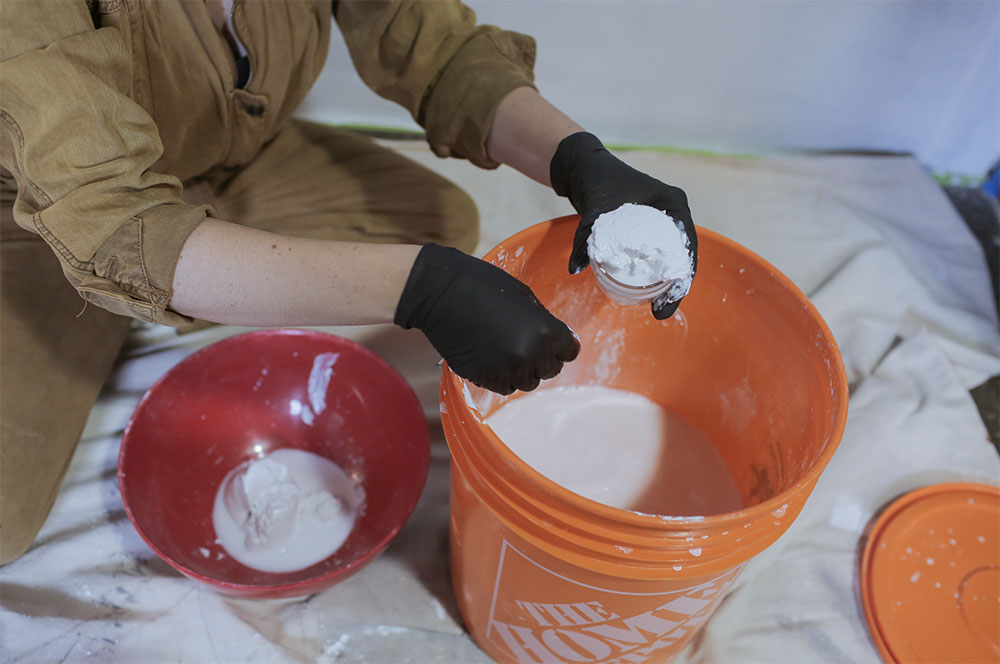
Making your own limewash is the most cost-effective option. Making lime putty from hydrated lime (available at hardware shops) combined with water, and then progressively diluting the mixture with water until it has the consistency of thick cream, is a straightforward process. Color is provided by natural pigments.
In a bucket, combine 1 part limewash and 1 part water. Fill a spray bottle halfway with water.
This is the stage from which you will manage the actual painting. To conduct the procedure properly, you do not need to be an expert. The first step is to select your preferred paint color.
Apply
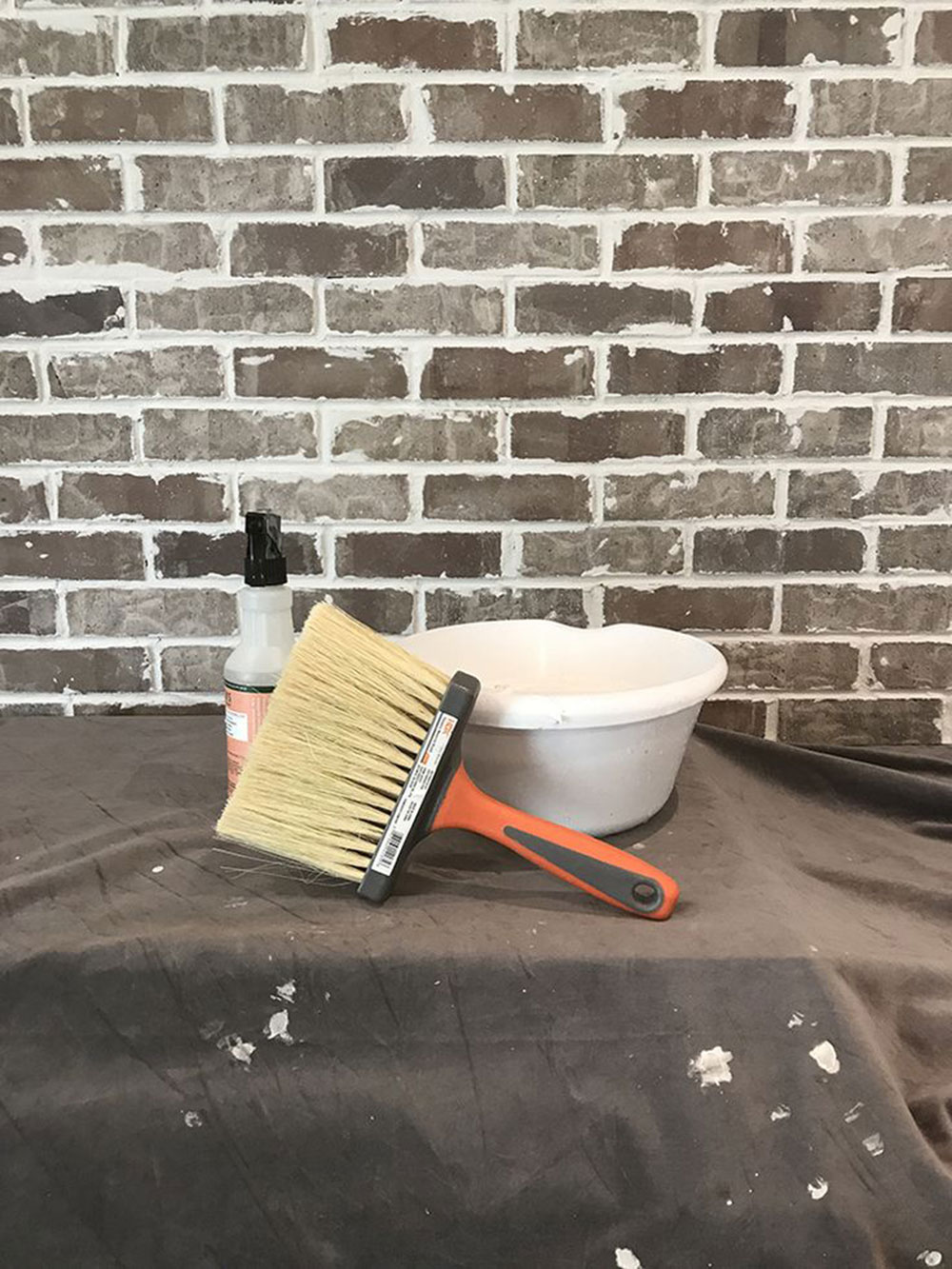
To dampen the brick, spray it with water. Every time you prepare an additional mixture, you MUST use the same proportion. Too much paint will appear “painted on” and coated over the top of the stone, rather than transparent.
Limewash should be applied in multiple thin coats with a long-haired or masonry paintbrush in feathery strokes. Never, ever use a roller.
Move from part to section, allowing the paint to cure for roughly 20 minutes between each.
In general, limewash should be applied sparingly and let dry gradually. Over multiple applications, it will produce a nice finish.
Keep in mind that limewash lightens dramatically as it dries. Colors can become up to ten times darker when wet, so it’s critical to test them. The opacity is determined by the number of applications applied; normally, three coats are advised. This is a paint that necessitates a certain amount of risk-taking. Colors vary according to the pigments used, the composition and porosity of the surface being painted, and how the paint is applied.
Caulk
Finally, caulk over the edges as a final touch (we taped the edges off with painter’s tape, of course).
If you want an overall white finish, repeat this complete procedure three times to make your limewashed brick backsplash exceptionally white.
You may just need to apply it once or twice if you want more color to peek through.
Travertine Maintenance Tips
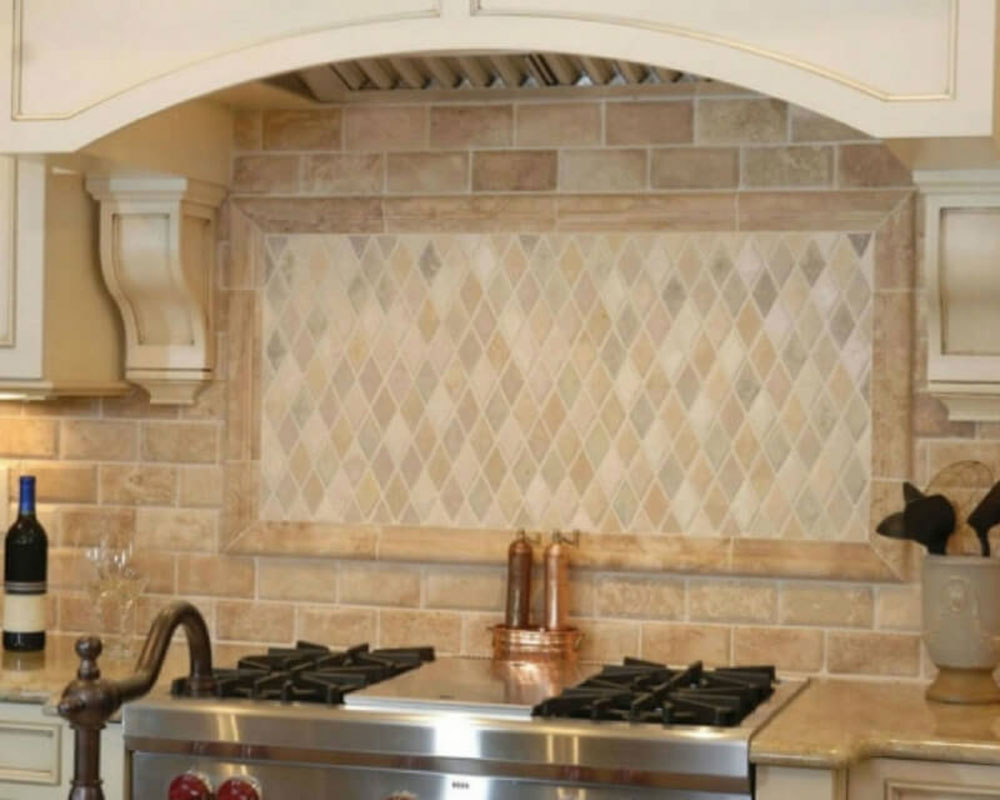
It is critical to maintain your tile in order for it to endure as long as possible. The most fundamental maintenance recommendation is to dust once a day, or at least three times each week.
Regular care and upkeep will keep the newly tinted travertine in excellent condition for decades. Dusting away from the tiles on a daily or weekly basis will prevent dust from collecting on the tile’s surface or becoming ground into the grout lines. This can considerably extend the life of the dyed stones.
Warm water and a drop of dishwashing liquid may be used to safely clean the discolored stone without creating discoloration or harm. A professional cleaner can remove accumulated filth, stains, or mold on the surface or in the grout. This can also give the stone a distinct patina.
FAQ on whitewashing a travertine tile backsplash
What is whitewashing?
On materials like wood, brick, or stone, whitewashing is a process used to produce a distressed, white-washed appearance.
To achieve a delicate, whitewashed finish, white paint is diluted with water and applied to the surface before the excess is wiped off.
Can you whitewash a travertine tile backsplash?
A backsplash made of travertine tiles can indeed be whitewashed. Travertine, a porous natural stone, may absorb the whitewash differently than other materials, so it’s vital to keep that in mind.
It’s best to test the whitewash first on a tiny, discrete area to make sure you like the outcome.
What materials do I need to whitewash my travertine tile backsplash?
White paint, water, a paintbrush or roller, a rag or sponge for wiping, and a sealant are all required (optional). Also, having gloves and safety glasses is a smart idea.
How do I prepare the travertine tile backsplash for whitewashing?
Using a stone cleaner, thoroughly clean the backsplash and allow it to completely dry.
To ensure that the whitewash adheres properly, you might need to lightly sand the surface if it already has any sealant or finish on it.
How do I apply the whitewash to the travertine tile backsplash?
In a jar, combine white paint and water in equal parts. Apply the mixture to the tiles in a thin, even coat using a paintbrush or roller.
Use a rag or sponge to quickly wipe away the excess, leaving a soft whitewash appearance in its place. To prevent the whitewash from drying before you can remove it, work in small pieces.
Should I seal the whitewashed travertine tile backsplash?
Although it is not required, sealing the whitewashed backsplash can assist to maintain the surface and make cleaning easier.
Employ a sealer made especially for natural stone, and apply it as directed by the manufacturer.
How long does it take to whitewash a travertine tile backsplash?
The size of the area and the quantity of coats needed will affect how long it takes to whitewash a backsplash made of travertine tile.
Follow the manufacturer’s directions for drying time and wait until each coat is totally dry before applying the next.
Ending thoughts on how to whitewash travertine tile backsplash
So far, this guide has covered all you need to know about painting a travertine tile in great detail. With guidance, you should be able to complete the job without the assistance of a professional.
If you enjoyed reading this article on how to whitewash travertine tile backsplash, we also wrote about subjects like what backsplash goes with black granite, what backsplash goes with marble countertops, how to install glass tile backsplash, how to choose a backsplash, how to clean brick backsplash, what backsplash goes with granite countertops or what backsplash goes with white cabinets.

